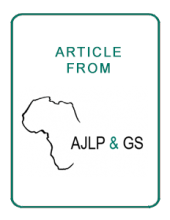Land Library
Welcome to the Land Portal Library. Explore our vast collection of open-access resources (over 74,000) including reports, journal articles, research papers, peer-reviewed publications, legal documents, videos and much more.
/ library resources
Showing items 1 through 7 of 7.Abstract: To avoid illegal occupation of people in areas where construction is forbidden and the development of informal settlements, municipal authorities must anticipate city planning.
Different government institutions in Ethiopia working on land related issues tackle and manage data and information independently, while their activities and mandates are often related or even overlapping.
Spatial data are a basis in development of multipurpose cadastre. This paper aims to evaluate spatial data acquisition and management techniques for multipurpose cadastre in Ethiopia and Rwanda.
In Nigeria, the spatial requirements of cadastral map for the purposes of land registration are based on 2D planimetric boundary coordinates without consideration for the elevation component of geometric space.
Since the commencement of land registration in Nigeria, less than 3% of land, mainly in urban areas had been registered. This is partly due to the prevalent sporadic method. Sporadic procedure of obtaining title is associated with many problems which include time and cost.
The accelerated exploration of sub-surface mineral resources across much of Africa has created the need for proper administration of sub-surface land rights. The trend world-wide is a separate cadastre for mining.
With the fast world population growing, the efficient use of land properties became of great necessity. In this context, the traditional two-dimensional (2D) cadastral management mode cannot satisfy the need of current 3D land use and 3D urban planning (Guo et al. 2014).

